This year marks exactly 80 years since D-Day, one of the most decisive days in World War II. D-Day marks the start of the liberation from the German occupation of Europe. For as long as I can remember, I have been deeply fascinated with everything related to World War II. I have devoured many books about this and watched many films, and it continues to touch me. The stories of courage, sacrifice, and perseverance appeal to the imagination and remind me of the high price paid for freedom. I have always found it important to remember this period. And I have always found it important to know as much as possible about this. Even if it hits me hard and can throw me off my balance for days. Before I could write this blog, I had to take the time to process the intensity of this museum visit. During Ascension Day my partner and I visited the "Liberating Wings" museum—a museum where this dark period in our history is kept alive.
An Era of Change and Destruction
We all learned it through history books. The Second World War, which raged from 1939 to 1945, was one of the most consequential conflicts in human history. It not only affected the countries involved but also affected the lives of millions of people around the world. The war began with Nazi Germany's invasion of Poland and culminated in a conflict that stretched from the battlefields of Europe to the pacific waters of the Pacific Ocean. The total number of victims of the Second World War is estimated at more than 70 million.
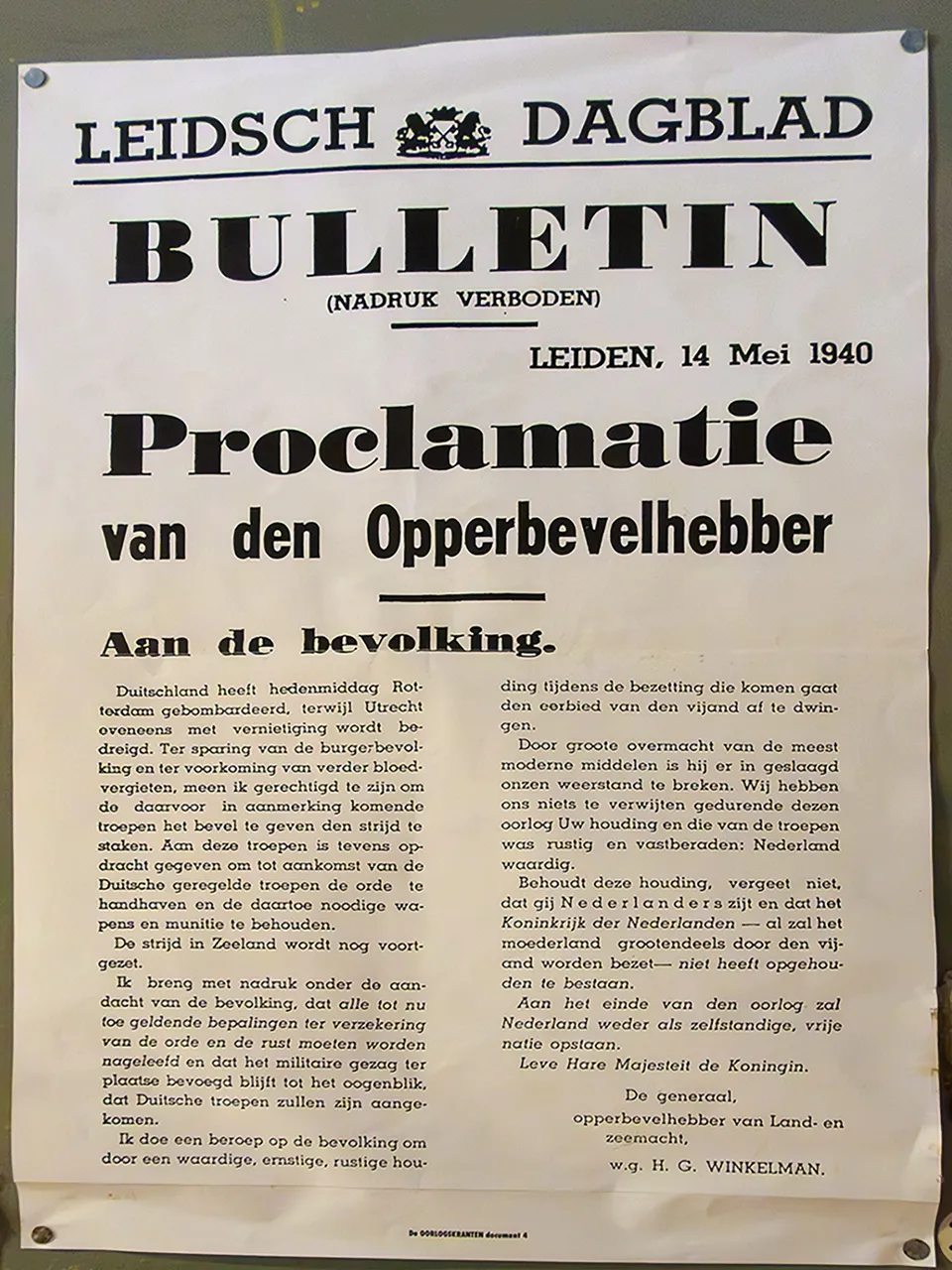
|
Dutch newspaper Leidsch Dagblad of May 14, 1940. The Announcement of the Dutch Capitulation. Germany bombed Rotterdam this afternoon, while Utrecht is also threatened with destruction. In order to spare the civilian population and prevent further bloodshed, I believe I am justified in ordering the appropriate troops to cease fighting. These troops have also been instructed to maintain order until the arrival of the German regular troops and to retain the weapons and ammunition required for this purpose. The battle in Zeeland continues. I would like to emphasize to the attention of the population that all provisions in force to date to ensure order and peace must be observed and that the military authority on site remains competent until the moment that German troops have arrived. I appeal to the population to command respect from the enemy through a dignified, serious, calm attitude during the occupation to come. By great force majeure and the most modern means he succeeded in breaking our resistance. We have nothing to reproach ourselves during this war. Your attitude and that of the troops was calm and determined. Worthy of the Netherlands! Maintain this attitude and do not forget that you are DUTCH, and that the Kingdom of the Netherlands - even though the motherland will be largely occupied by the enemy - has not ceased to exist. At the end of this war, the Netherlands will rise again as an independent nation. Long live Her Majesty The Queen!. |
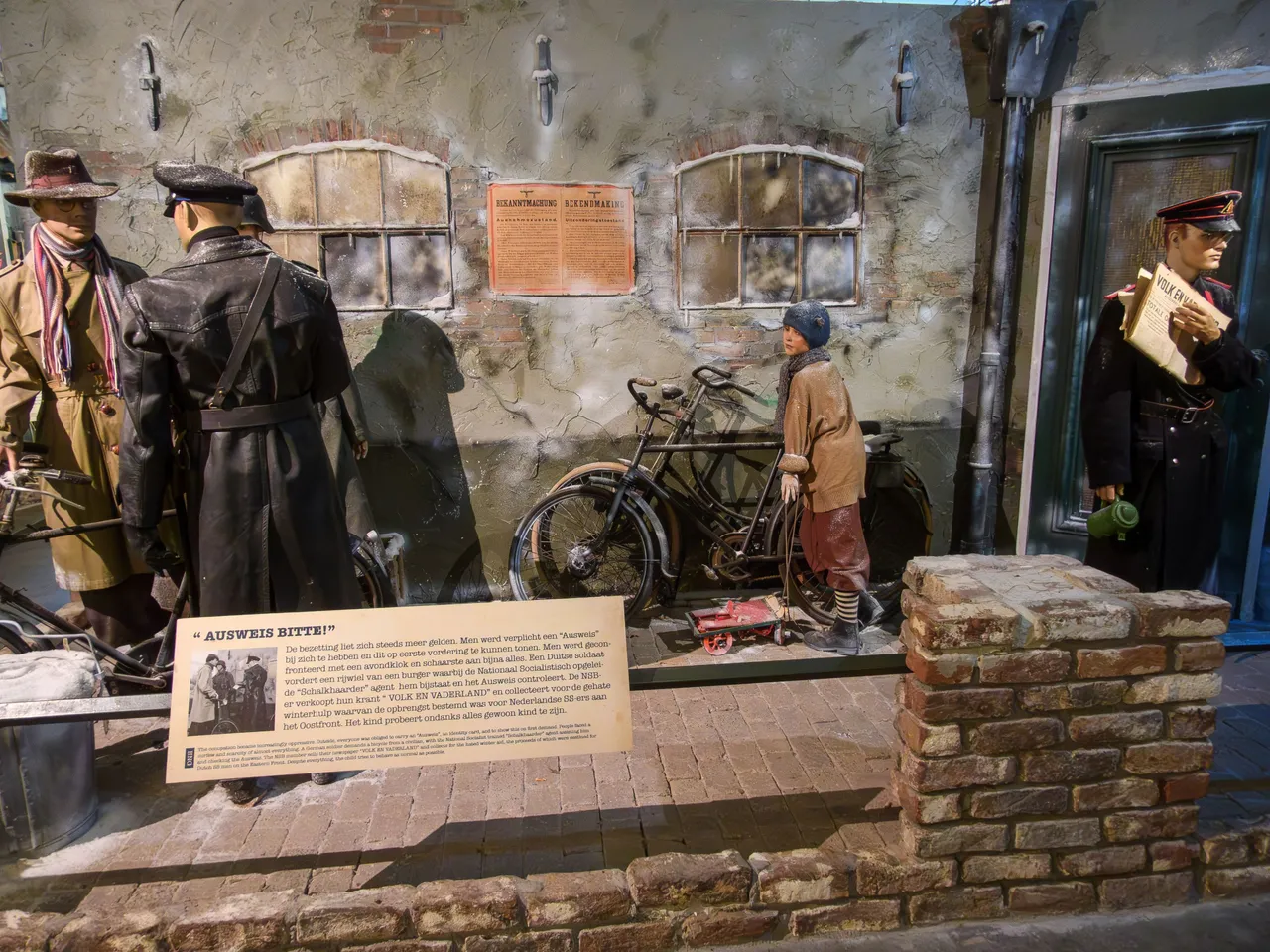
|
Ausweis Bitte. The occupation increasingly asserted itself. People were required to have an "Ausweis" (ID card) with them and to be able to show this at the first request. People were faced with a curfew and a scarcity of almost everything. A German soldier commandeers a bicycle from a citizen and the National Socialist-trained "Schalkhaarder" agent assists him and checks the "Ausweis". The NSB member is selling his newspaper "Volk en Vaderland", thus collecting for the hated winter aid, the proceeds of which were intended for Dutch SS members on the eastern front. And despite everything, the child still tries to be a normal child. |
The Impact Of The War On The World
The war led to immense human losses and material destruction, but also to fundamental changes in the world order. The creation of NATO in 1949. The founding of the United Nations, the rise of the United States and the Soviet Union as superpowers, and the beginning of the Cold War can all be traced directly to the consequences of this war.
For the countries living under the occupation of the Axis powers, liberation brought hope and a new opportunity for construction and renewal. In the Netherlands, for example, the end of the war meant the return to sovereignty and the opportunity to build a new future, despite the destruction and losses our country had suffered.
A Visit to Liberating Wings
With this historical context in mind, last week, during Ascension Day, we visited the Liberating Wings Museum in Best, the Netherlands. This museum is dedicated to the memory and celebration of the liberation of the Netherlands and offers an extensive and impressive collection that brings the stories of the war to life.
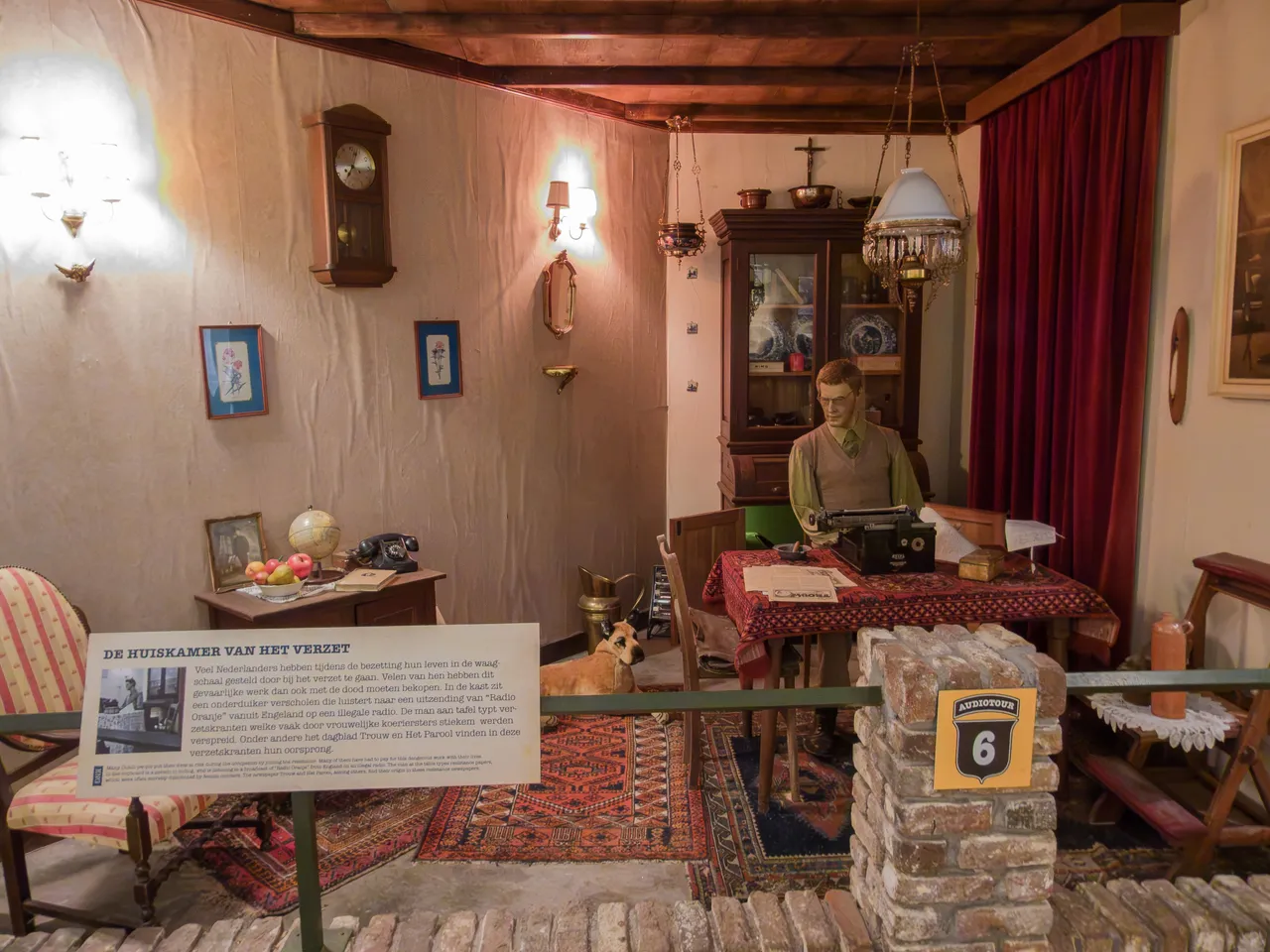
|
In the Netherlands too, many Dutch people risked their lives during the occupation by joining the resistance. Many of them had to pay for this dangerous work with their lives. Hidden in the cupboard is a person in hiding who listens to a broadcast of "Radio Oranje" from England via an illegal radio. The man at the table types illegal resistance newspapers, which were often secretly distributed by female couriers. The still existing daily newspapers "Trouw" and "Het Parool", among others, have their origins in these resistance newspapers. |
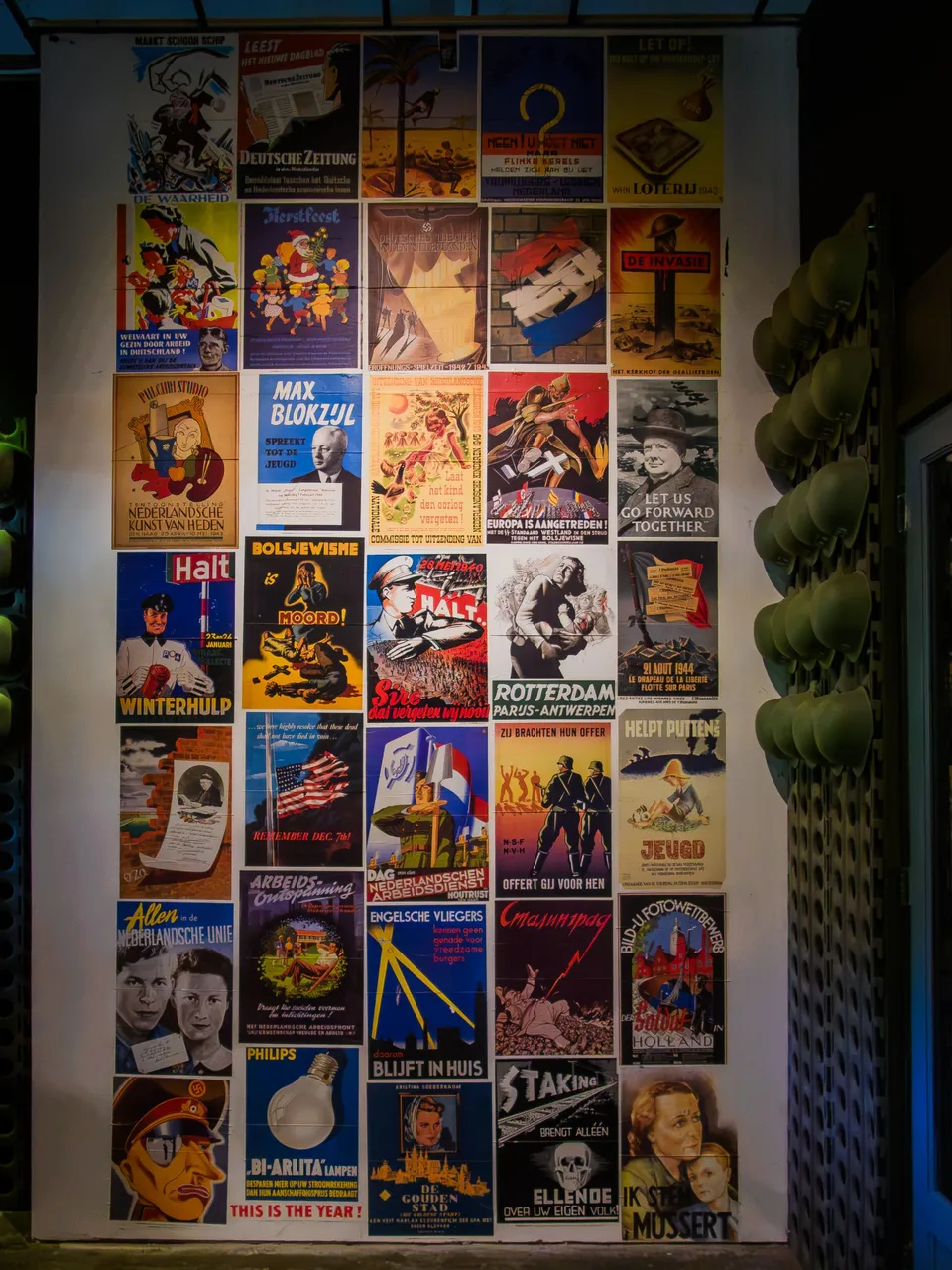
|
However, there were also many Dutch people who chose the other side. The side of the German enemy. They spread these kinds of propaganda posters everywhere. |
Exhibitions and Sights
Upon entering the museum you are immediately immersed in the atmosphere of the war years. The exhibitions have been carefully curated and provide an in-depth insight into the events of the time. There is a lot to see, but one of the most impressive features is the military vehicle collection. From planes to jeeps, each vehicle tells its own story of struggle and liberation. The special thing about the means of transport here in this museum is that all these means were actually used in the Second World War.
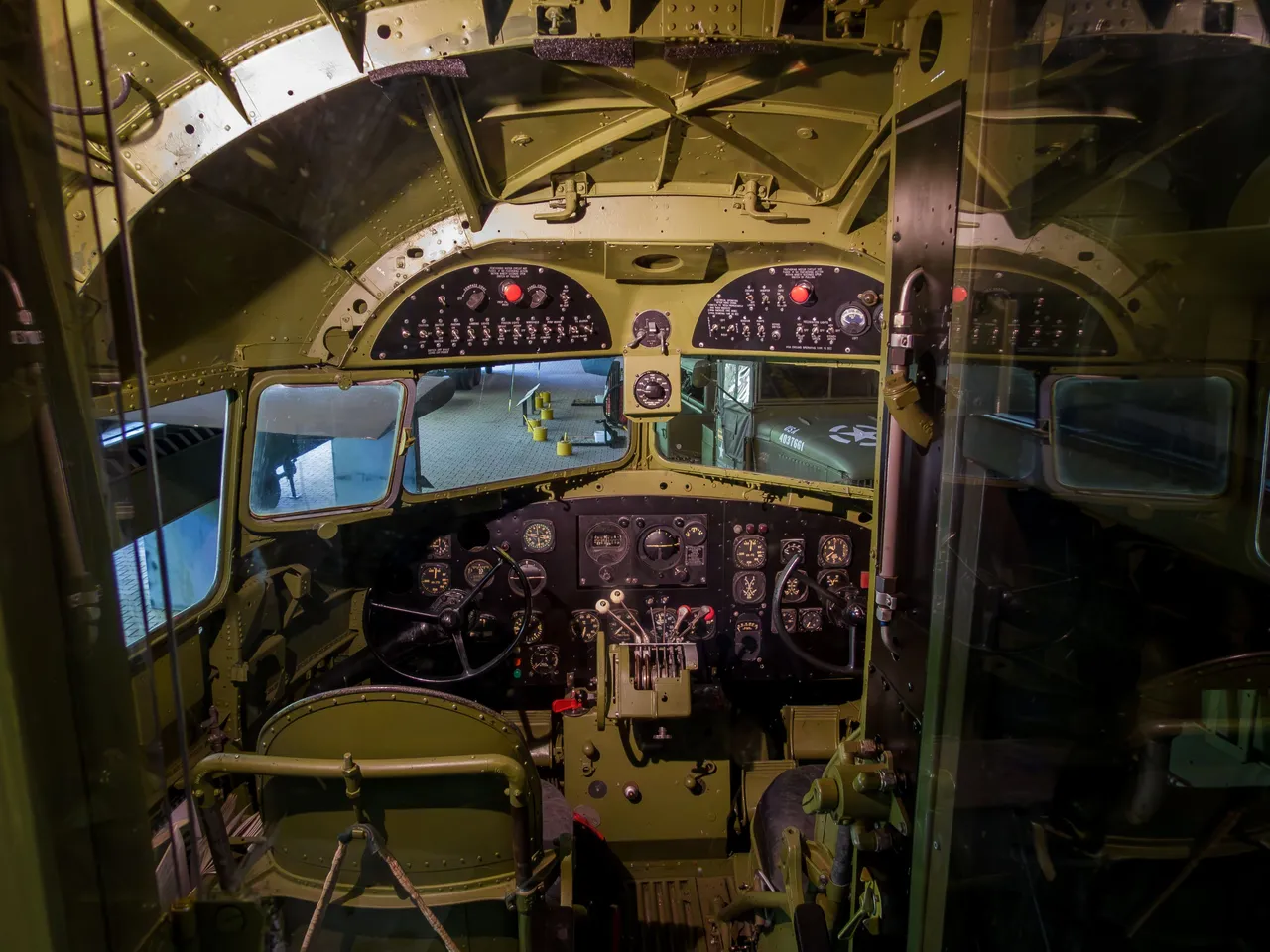
Cockpit of a crashed plane
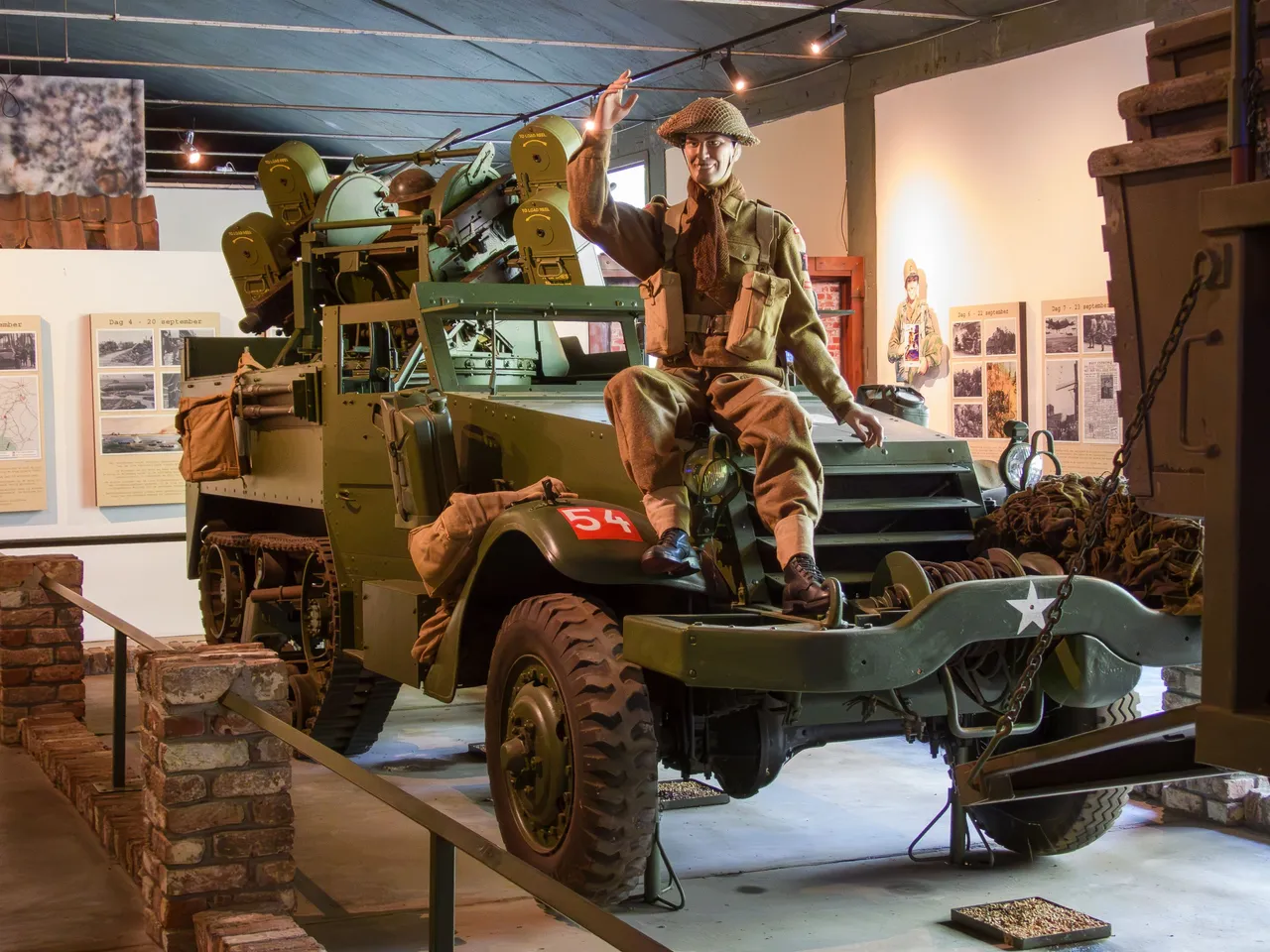
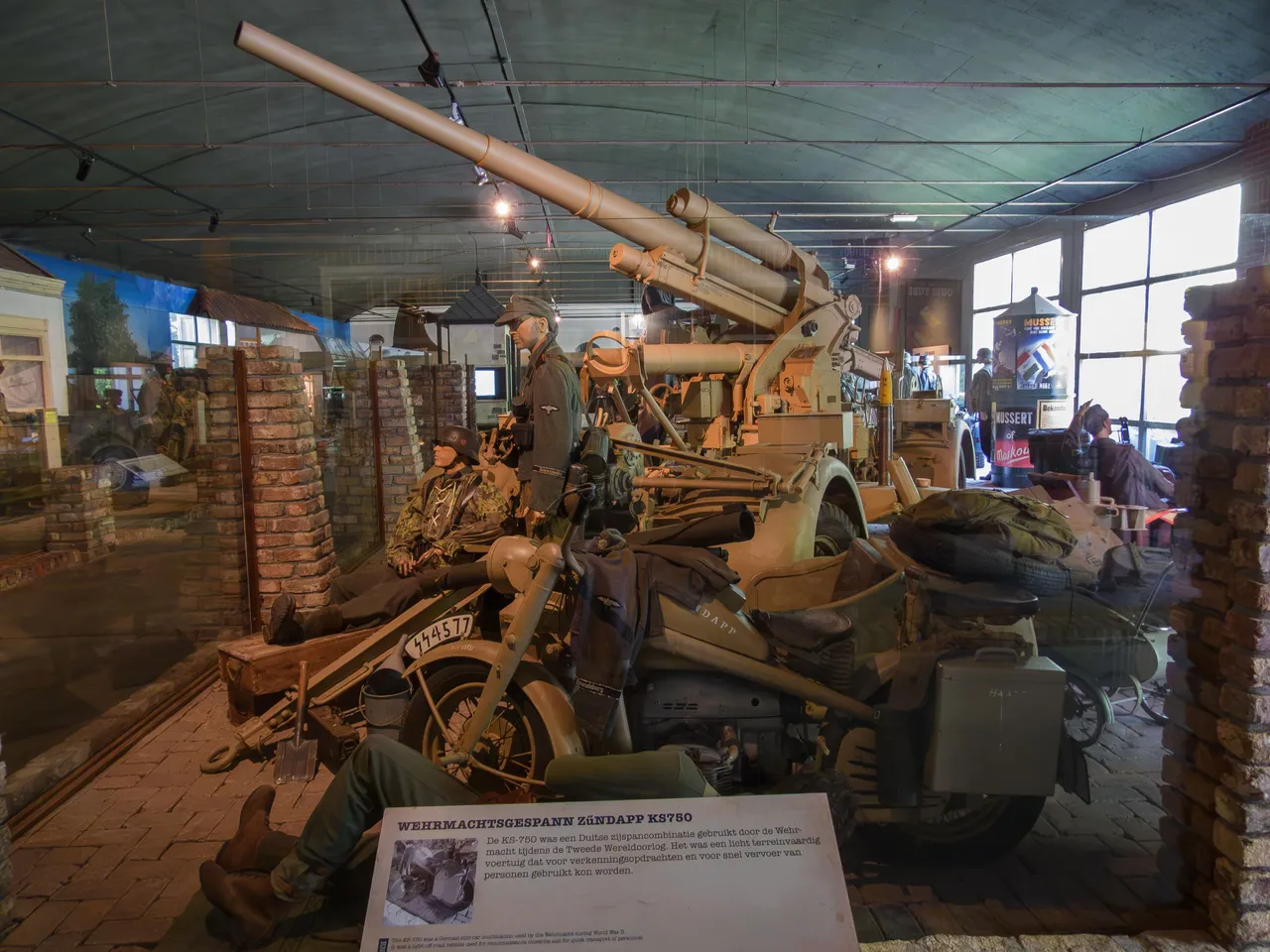
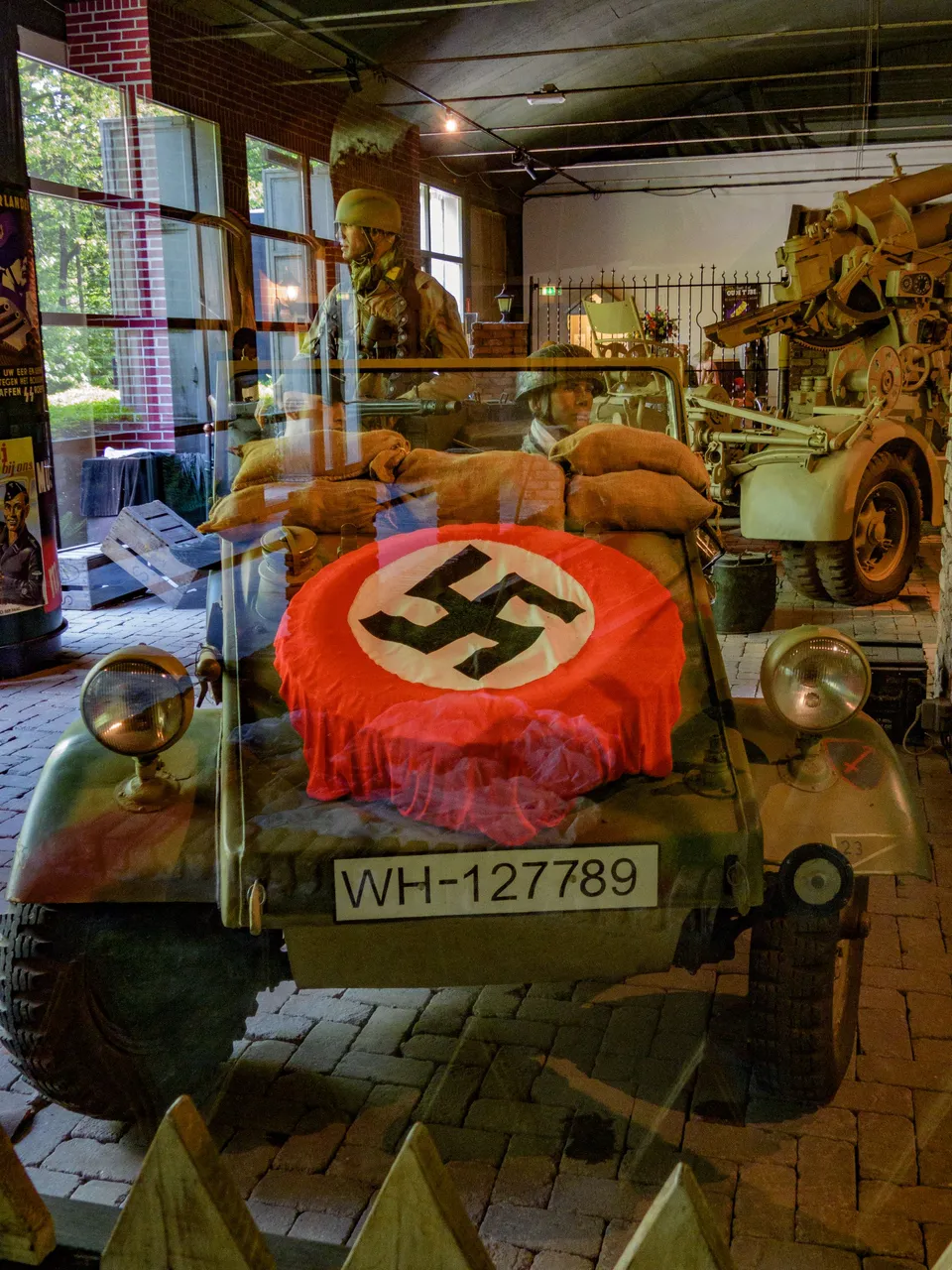
Another highlight is the extensive collection of soldiers' uniforms, weapons, and personal belongings. These objects provide a tangible connection to the people who fought and fell for our freedom. The exhibition is done in a way that tells a story by building a scene that mimics everyday life. Of course, we know all too well that this is just a presentation and that it is not reality. It probably doesn't even come close to reality. But all in all, this museum succeeds well in creating a certain atmosphere that certainly touched us.
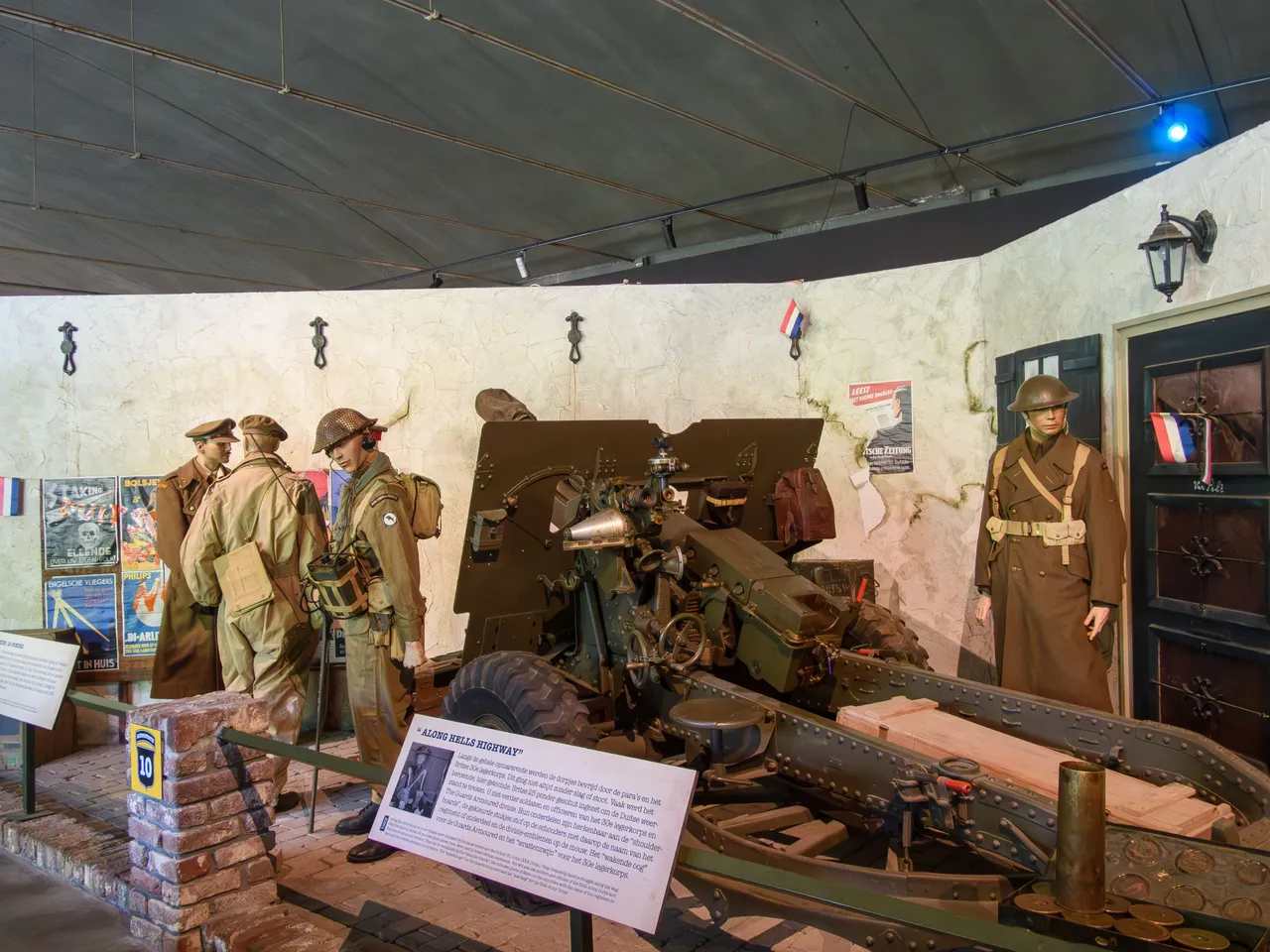
|
During the liberation, villages along the entire advance route were liberated by the Paratroopers and the British 30th Army Corps. This did not always go smoothly. The famous British 26 pounder gun shown here was often used to break the German Resistance.. |
Educational Programs
The museum also offers educational programs for visitors of all ages. There are interactive tours that present history in an accessible and fascinating way. These programs emphasize not only the historical facts but also the human stories behind the events.
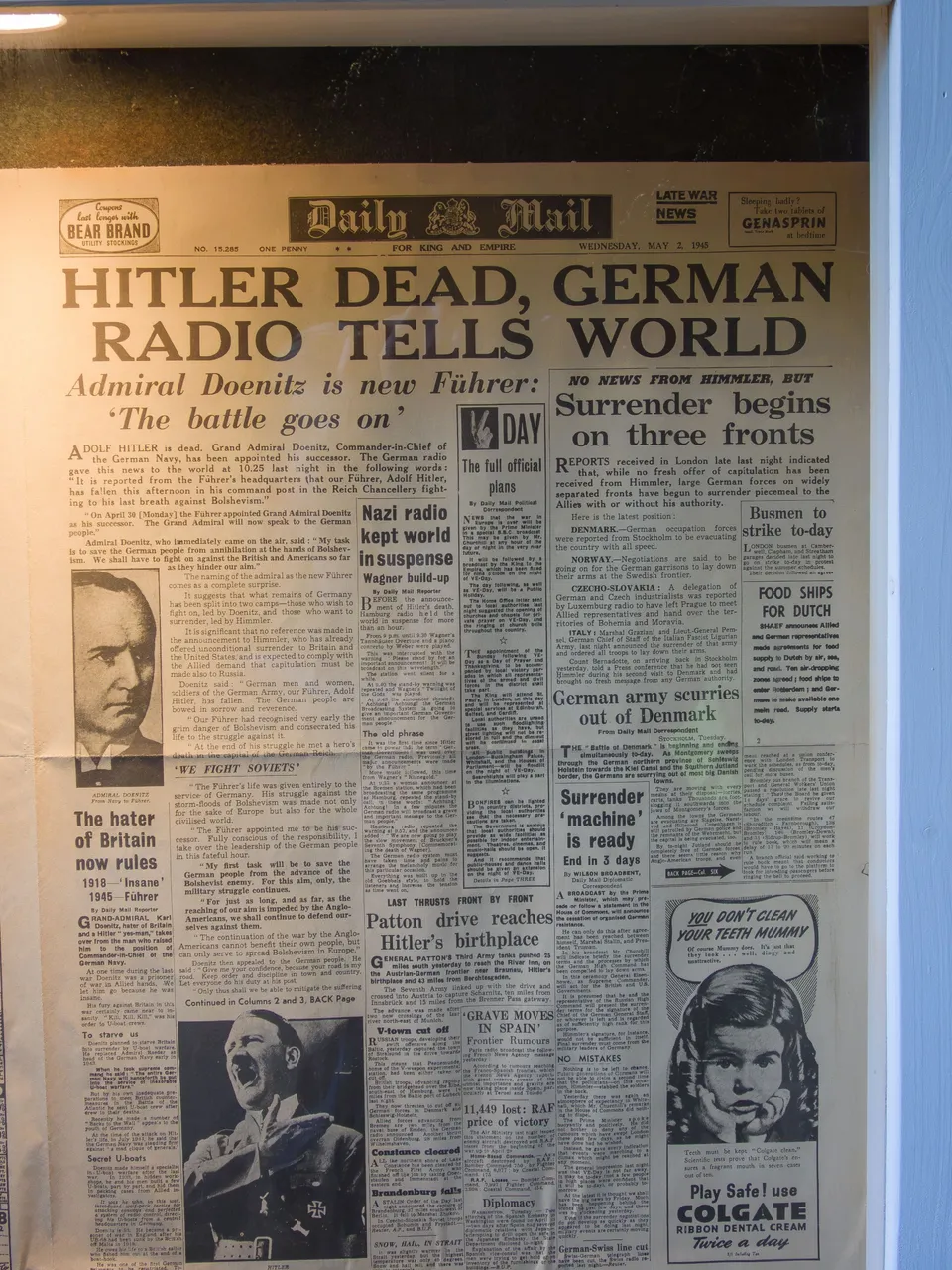
The Value of Freedom
Looking back on the history of the Second World War and my visit to Liberating Wings, it is absolutely clear that very high sacrifices were made. This isn't something where you say, "Oh well, it's in the past. Leave it alone!". On the contrary. It's only been 80 years, and the sacrifices made by the generations before us are unimaginable to many of us and should serve as a reminder of something no one in the world should ever want to experience again. For relative peace and freedom, it has paid the ultimate price to millions of people, the loss of their lives. Torn from life! People who, just like you and me, tried to live their lives in the best way possible for them. And other people who followed a belief and fought for their ideals.
How sad it is to see that less than 80 years after the end of World War II, our world is once again torn apart by war. The very thing that everyone shouted after the end of the Second World War was, "Never again". Armed conflicts that rumble on all over the world. Once again we are confronted with new challenges that threaten many people directly and indirectly. We live in a time of high political tensions, we see a strong rise of nationalism again, and we notice the restrictions on press freedom and civil rights, a division in society that is becoming increasingly visible. Unfortunately, these are just a few examples of the many problems we face today, which for many people bear an uncanny resemblance to the 1930s, the run-up to World War II. I wish I wouldn't care so much about these things, but alas, I can't bury my head in the sand and shrug off the many problems we have to deal with. This sometimes makes me wonder if none of us have learned anything from history. Have all the sacrifices of the Second World War been in vain?
What Does Freedom and Peace Mean Today?
Commemorating the Second World War reminds us how precious peace and freedom are. The Liberating Wings Museum powerfully conveys this message by bringing the stories of the war to life and emphasizing the importance of continuing to learn the lessons of the past.
While we should certainly be aware that the past already seems to be reviving in some parts of our world. Reflecting on the sacrifices that were made for our freedom and peace, but also being aware of the challenges of the present. Reflect on the past, but also look to the future. Freedom and Peace cannot be taken for granted, it is a privilege that we must defend and celebrate together.